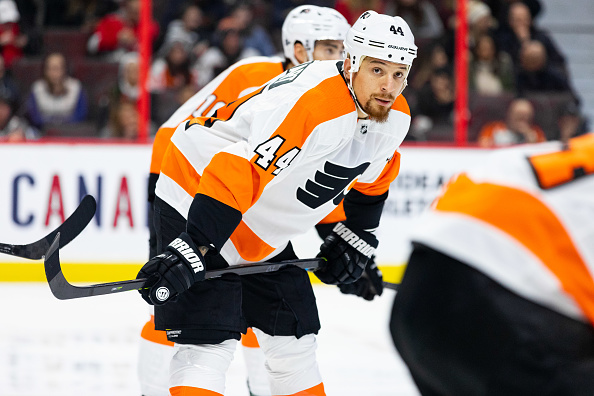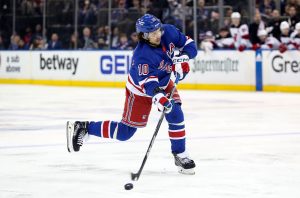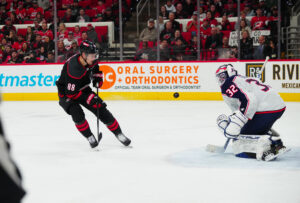Player development seems to always result in more questions than answers. How likely is it for a top pick to pan out? What makes a player a “steal”? Last Word On Hockey has a new series on how to properly develop prospects from all different spots throughout the draft. This week’s piece involves draft picks in the back half of the first round and how they were used early in their careers.
NHL Player Development Of First-Round Picks
In the span of 2005 through 2015, there were 84 total selections made between 16th overall and 30th overall on forwards playing in North America. Looking at all 84 forwards, they were split into different categories. Those categories were “Forwards Deemed NHL-Ready and Brought In Immediately When Ready,” “Forwards Near NHL-Ready and Brought In Immediately When Near-Ready,” “Forwards Rushed Slightly,” “Forwards Rushed,” “Forwards Forced,” “A Little Patience,” “Patience,” and “Too Much Patience.”
There were 12 forwards who fell into the fourth category, “rushed,” on the list. Of those 12 players, seven made their NHL impacts in their DY+3 season. Those players are Michael McCarron, Brock Boeser, Colin White, Tyler Ennis, Chris Stewart, Quinton Howden, and Josh Ho-Sang. In this piece, we look at Chris Stewart.
In this piece, we will be using stats from Elite Prospects (raw stats) and Hockey Reference (ice time). Additionally, the analytics we are using are as follows: even-strength offence goals above replacement (EVO), even-strength defence goals above replacement (EVD), wins above replacement (WAR) and goals above replacement (GAR). Those analytics are from Evolving Hockey (subscription required).
NHL Player Development Of Chris Stewart
Chris Stewart, drafted 18th overall by the Colorado Avalanche in the 2006 NHL draft, came out of the OHL’s Kingston Frontenacs organization. In his DY-1 season, he scored 18 goals and 12 assists for 30 points in 64 games, for 0.469 points per game. That ranked 67th out of the aforementioned 84 forwards in DY-1 production. He would follow that up with 37 goals and 50 assists for 87 points in 62 games, for 1.403 points per game. That ranked 19th out of the same 84 forwards in DY production. Upon getting drafted, Stewart would play one more season in the OHL and one season in the AHL before making his first NHL impact.
In his DY+1 with Kingston, he scored 36 goals and 46 assists for 82 points in 61 games, for 1.344 points per game. That ranked 19th out of 82 forwards still outside the NHL in DY+1 production. The following season, now playing for the Avalanche’s AHL affiliate Lake Erie Monsters, Stewart would impress. He scored 25 goals and 19 assists for 44 points in 77 games, for 0.571 points per game. That ranked 61st out of the 70 forwards still outside the NHL in DY+2 production, as well as 10th out of 16 forwards playing at the AHL level. Stewart would make the jump to the NHL level the following season.
How Chris Stewart Was Used
His first big break into the NHL wasn’t for an entire season. He would split between the NHL and AHL. In the AHL, he played 19 games, scoring five goals and six assists for 11 points. Meanwhile, at the NHL level, he would play 53 games, averaging 12:20 time on ice per game. In that role, Stewart scored 11 goals and eight assists for 19 points, a modest stat line. Analytically, however, Stewart had a poor season in every aspect. His EVO (-0.5) and EVD (-3.0) painted a picture of inefficiency at even-strength for the rookie. Additionally, his WAR (-0.4) and GAR (-2.3), which are all-situations stats, showed that his special teams’ ability did not help him be an above-replacement level player.
Despite the poor rookie season, Stewart would play nearly his entire second year at the NHL level. He drew into two AHL games, failing to register a point. At the NHL level, he played 77 games, averaging 16:42 per game, a massive step up from the year prior. With that massive boost in ice time, Stewart broke out in a big way. He scored 28 goals and 36 assists for 64 points in those 77 games. Analytically, he was outstanding in all but his EVD metric (-8.0) which was, for lack of a better word, terrible. But his EVO (14.2) made up for it completely, as that EVO score is elite. His poor defensive play, however, held back his WAR (1.6) and GAR (8.7) from being truly elite numbers.
Chris Stewart’s Year Three Trade Leads To Improved Two-Way Game
In his third season, following the break-out, he would split between two teams. After 36 games, scoring 13 goals and 17 assists for 30 points, with the Avalanche, he was dealt to the St. Louis Blues. There, he finished the year with 15 goals and eight assists for 23 points in 26 games. Overall, he played 62 games and averaged 17:29 per game, another raise. In total, he scored 28 goals and 25 assists for 53 points. Analytically, Stewarts game became more well-rounded. His EVO (5.2) unsurprisingly fell, but his EVD (2.2) dramatically improved. That led to his WAR (2.1) and GAR (11.6) improving despite the big drop in EVO from year two to three.
Following that third season, in 2010-11, Stewart would play two and a half more seasons with the Blues. In that span, he scored 48 goals and 44 assists for 92 points in 185 games. In his last season with the Blues, he was traded mid-way through to the Buffalo Sabres. As a Sabre, he would play 66 games across the final half of the 2013-14 season and the first half of the 2014-15 season, scoring 11 goals and 14 assists for 25 points. In 2014-15, he was dealt to the Minnesota Wild, where he would finish the year scoring three goals and eight assists for 11 points in 20 games. Stewart would leave the Wild in free agency to join the Anaheim Ducks for one year, scoring eight goals and 12 assists for 20 points in 56 games.
Where Chris Stewart’s NHL Player Development Led Him
After that season with the Ducks in 2015-16, he would return to the Wild for a season and a half. In that span, he scored 22 goals and 12 assists for 34 points in 126 games. In his last year with the Ducks, he was dealt mid-way to the Calgary Flames, where he would finish the season with three points in seven games. After not playing at the NHL level in 2018-19, he would return in 2019-20 with the Philadelphia Flyers, playing 16 games and scoring one point. This would end up being his last season in the NHL.
Stewart may be one of the most underrated players in recent history. But his NHL player development with the Avalanche and the Blues carved him out to be a player who consistently scored over 15 goals and around 40 points every single year. Although he didn’t become an elite producer and wasn’t able to recreate the second season of his career with 64 points in 77 games, he still had a long and successful career.
Junior league stats via Elite Prospects, NHL stats via Hockey Reference, NHL analytics via Evolving Hockey
Main photo:






